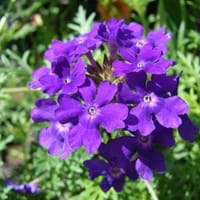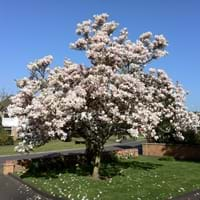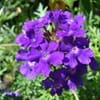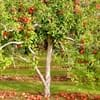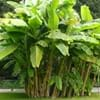Life Span
Annual
Perennial
Type
Flowering Plants
Tree
Origin
America, Europe
Hybrid origin
Types
Clump verbena, Moss verbena, Annual Verbena, Brazilian verbena, Sandpaper Verbana
Gwillimia, Manglietia, Kmeria
Habitat
Forest edges, Hillside, Woods
Subtropical climates, Tropical regions
USDA Hardiness Zone
3-9
6-9
AHS Heat Zone
Not Available
9-6
Sunset Zone
not available
Not Available
Habit
Not Available
Oval or Rounded
Flower Color
Blue, Dark Purple, Light Purple, Red, White
Purple, Pink, Light Pink, Rose
Flower Color Modifier
Not Available
Bicolor
Fruit Color
Not Available
Brown
Leaf Color in Spring
Dark Green
Green
Leaf Color in Summer
Dark Green, Green
Green
Leaf Color in Fall
Dark Green, Green
Green, Yellow green, Sandy Brown
Leaf Color in Winter
Not Available
Not Available
Leaf Shape
Oblovate
Ovate
Plant Season
Early Spring, Late Autumn
Spring, Summer
Sunlight
Full Sun, Partial shade
Full Sun, Partial Sun
Type of Soil
Well drained
Clay, Loam, Sand
The pH of Soil
Neutral, Slightly Acidic
Acidic, Neutral
Soil Drainage
Average
Well drained
Bloom Time
Early Fall, Early Summer, Fall, Late Spring, Late Summer, Summer
Spring, Late Spring
Tolerances
Not Available
Not Available
Where to Plant?
Container, Ground
Ground
How to Plant?
Seedlings, Stem Planting
Seedlings, Transplanting
Plant Maintenance
Medium
Medium
Watering Requirements
Do not water frequently, Medium, Never Over-water, Requires regular watering, Requires watering in the growing season
Prefer drip-irrigation instead of Over-head watering
In Summer
Lots of watering
Lots of watering
In Spring
Moderate
Moderate
In Winter
Average Water
Average Water
Soil pH
Neutral, Slightly Acidic
Acidic, Neutral
Soil Type
Well drained
Clay, Loam, Sand
Soil Drainage Capacity
Average
Well drained
Sun Exposure
Full Sun, Partial shade
Full Sun, Partial Sun
Pruning
Prune for shortening long shoots, Prune if you want to improve plant shape, Prune lower leaves, Prune regularly, Prune to control growth
Prune if you want to improve plant shape
Fertilizers
All-Purpose Liquid Fertilizer
Fertilize in late fall, fertilize in spring, Requires high amount of nitrogen
Pests and Diseases
Not Available
Aphids, Bacterial Blight, Canker, Crown gall, Hoplia beetle, Leaf burn, Leaf spot, Mealybugs, Powdery mildew, Red blotch, Scorch, Soft scales, Thripes, Wetwood
Plant Tolerance
Drought
Not Available
Flower Petal Number
Single
Single
Showy Foliage
Not Available
No
Foliage Texture
Not Available
Coarse
Foliage Sheen
Not Available
Matte
Invasive
Not Available
No
Attracts
Butterflies
Not Available
Allergy
Arthritis, Asthma, Chest Pain, Itchiness, Whooping Cough
Not Available
Aesthetic Uses
Showy Purposes
Showy Purposes
Beauty Benefits
Not Available
Treatment of Dark Spots
Environmental Uses
Air purification
Air purification
Medicinal Uses
Arthritis, Gallbladder Diseases, Itching, Jaundice, Joint pain, Kidney problems, Liver problems, Metabolic disorders, Sore throat, Upset stomach, Urinary tract problems
Alzheimer’s Disease, Anxiety, Cancer, Digestion problems, Liver problems, Menstrual Cramps, Respiratory Disorders, Weight loss
Part of Plant Used
Flowers, Root
Whole plant
Other Uses
Air freshner, Can be made into a herbal tea, Cosmetics, Decoration Purposes, Economic Purpose, Employed in herbal medicine, Oil is used for aromatherapy, Oil is used in perfume, soaps, creams, etc., Showy Purposes, Used As Food, Used as Ornamental plant, Used for flavoring in Liquors, dairy products, gelatins,puddings, meats, candies, etc., Used for fragrance
Used as Ornamental plant, Used for its medicinal properties
Used As Indoor Plant
No
Yes
Used As Outdoor Plant
Yes
Yes
Garden Design
Bedding Plant, Bonsai, Container, Edible, Herb
Feature Plant, Foundation, Shade Trees
Botanical Name
Purpletop Vervain
MAGNOLIA 'Alexandria'
Common Name
Verbena
Alexandria Magnolia, Magnolia
In Hindi
verbena
हिम चम्पा
In German
Eisenkraut
Magnolienbaum
In French
verveine
magnolia
In Spanish
Verbena
árbol de magnolia
In Greek
λουίζα
Magnolia δέντρο
In Portuguese
verbena
magnólia
In Polish
werbena
magnolia drzewa
In Latin
Grindelia
Magnolia lignum
Phylum
Magnoliophyta
Magnoliophyta
Class
Magnoliopsida
Magnoliopsida
Order
Lamiales
Magnoliales
Family
Verbenaceae
Magnoliaceae
Clade
Not Available
Angiosperms, Magnoliids
Tribe
Not Available
Not Available
Subfamily
Not Available
Not Available
Properties of Verbena and Magnolia Tree
Wondering what are the properties of Verbena and Magnolia Tree? We provide you with everything About Verbena and Magnolia Tree. Verbena doesn't have thorns and Magnolia Tree doesn't have thorns. Also Verbena does not have fragrant flowers. Verbena has allergic reactions like Arthritis, Asthma, Chest Pain, Itchiness and Whooping Cough and Magnolia Tree has allergic reactions like Arthritis, Asthma, Chest Pain, Itchiness and Whooping Cough. Compare all the properties and characteristics of these two plants. Find out which of these plant can be used as indoor plant. If you are interested to decorate your house and garden, find out aesthetic uses, compare them and select the plant which will beautify your surrounding. Along with beautification, try comparing medicinal and edible uses of Verbena and Magnolia Tree and you can choose the plant having best and most benefits.
Season and Care of Verbena and Magnolia Tree
Season and care of Verbena and Magnolia Tree is important to know. While considering everything about Verbena and Magnolia Tree Care, growing season is an essential factor. Verbena season is Early Spring and Late Autumn and Magnolia Tree season is Early Spring and Late Autumn. The type of soil for Verbena is Well drained and for Magnolia Tree is Clay, Loam, Sand while the PH of soil for Verbena is Neutral, Slightly Acidic and for Magnolia Tree is Acidic, Neutral.
Verbena and Magnolia Tree Physical Information
Verbena and Magnolia Tree physical information is very important for comparison. Verbena height is 6.56 cm and width 10.50 cm whereas Magnolia Tree height is 460.00 cm and width 370.00 cm. The color specification of Verbena and Magnolia Tree are as follows:
Verbena flower color: Blue, Dark Purple, Light Purple, Red and White
Verbena leaf color: Dark Green
Magnolia Tree flower color: Purple, Pink, Light Pink and Rose
- Magnolia Tree leaf color: Green
Care of Verbena and Magnolia Tree
Care of Verbena and Magnolia Tree include pruning, fertilizers, watering etc. Verbena pruning is done Prune for shortening long shoots, Prune if you want to improve plant shape, Prune lower leaves, Prune regularly and Prune to control growth and Magnolia Tree pruning is done Prune if you want to improve plant shape. In summer Verbena needs Lots of watering and in winter, it needs Average Water. Whereas, in summer Magnolia Tree needs Lots of watering and in winter, it needs Average Water.
